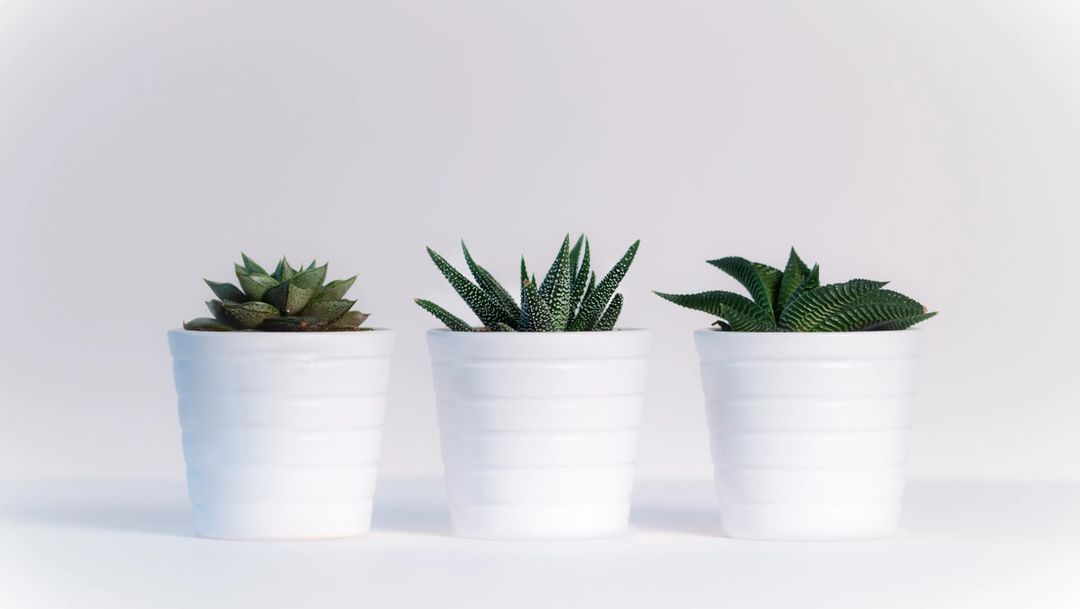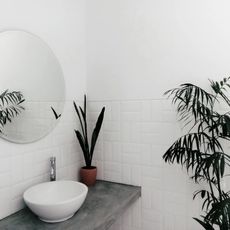Five Easy Indoor Plants To Keep Your Home Green

Written by: Clare Cogan, Customer experience @blueland
September 14, 2020
Do you want to live greener? Do you want to spruce up your home with freshly grown leaves, all while staying plastic-free? Sure, that may sound easier said than done. After all, not everyone was born with a green thumb.
But don’t worry, adding greenery to your home is easier than you think! We put together a list of tips, plants, and tools to get your indoor gardens started off right. So if you’re ready to get planting without all the plastic and chemicals, here are some easy ideas to freshen up your interior!
1. Aloe Vera
There is no better way to start your indoor plant collection than with the healing succulent, Aloe Vera. Famous for being the key ingredient in sunburn lotions and moisturizers, Aloe Vera also has another lesser-known advantage: it improves air quality. But these health benefits aren’t why it’s first on the list.
Aloe Vera is also an attractive, southwestern style succulent that requires very little attention. And as is the case with all succulents, it only needs to be watered once every 3 weeks (even less in the winter). All Aloe Vera requires to thrive is well-drained soil (bonus points for crushed stone at the bottom), bright but indirect sunlight, succulent fertilizer, a relatively cool temperature, and love. And if you put it in a ceramic container you won’t need to change planters for years!
Bonus tips: If the leaves start to brown, cut back on sun exposure. If you want to harvest its healing powers, only use the top third of the sword-like leaves (don’t worry, they’ll grow back).
2. Sansevieria (Snake Plant)
Also called “Mother in Law’s Tongue” for the long, sharp, pointed leaves, Sansevieria is another easy-care houseplant that won’t be bothered if you forget to water. And much like it’s good buddy Aloe, it also improves air quality. A joint study between the University of Georgia and Yonsei University in Seoul, South Korea, actually found that Snake Plants have been shown to remove formaldehyde and benzene from the air!
What’s even better, it’s basically indestructible. Snake Plants can thrive in bright rooms or in dark corners, and it only needs to be watered once a month. It prefers room temperature (70 degrees Fahrenheit) and normal succulent fertilizer, and it only requires repotting once a year at most. And if you want more of these pretty green leaves with yellow borders, just take new shoots that are sprouting out of the soil and repot independently. And if you want to make your own planters, check out some fun ways to make DIY recycled newspaper pots!
3. Jade Plant
Also known as the “money plant” or the “dollar plant,” Jade is a leafy green good luck charm often given as a housewarming present. And with thick, glossy leaves and a nice, subtle fragrance, it’s easy to see why. Jade is a lovely and relatively low maintenance addition to any home’s interior.
Jade prefers bright and direct sunlight for about 4 hours a day and is great for any south-facing window sills. It thrives in summer temperatures of about 70 degrees, can chill out nicely in the winter at 50 degrees, and requires well-drained (and slightly acidic) succulent fertilized soil. The only thing Jade requires that our previous plants did not is a more attentive watering regimen. It only needs to be watered every 2-3 weeks, but be careful not to overwater or let it sit in wet soil. For best results, be sure to drain soil until it is merely damp, and don’t let it get too dry for too long.
Bonus tip: Jade is susceptible to mealy bugs, so you might want to check out some non-toxic insecticides to keep your jade from bugging out.
4. Rosemary
Not only is this Mediterranean herb drought-resistant and perfect for a sunny windowsill, it also smells amazing and can be used to cook. And if you want to release a burst of freshness into any room, just brush against the sprouts with your hand and enjoy the fresh rosemary aroma.
Rosemary loves direct sunlight and a window with bright morning sun (or bright fluorescents). It only needs water every two weeks, but make sure to let the soil completely dry before watering again. It can survive in almost any indoor temperature with proper air circulation and does best with a twice-monthly routine of organic fertilizer.
Bonus tip: Rosemary does best in terracotta pots.
5. Pothos
The classic hanging houseplant is also the easiest to grow, and perhaps the hardest to kill. These trailing vines with heart-shaped leaves can handle almost any kind of light, including pure fluorescents! This makes them ideal for offices, dorm rooms, windowless rooms, and even basements! They also leave endless opportunity for creative decorating by hooking their vines on walls or along window frames!
While Pothos is highly resilient, it does prefer indirect bright light, well-drained potting soil, monthly fertilizing and water only when the soil has dried out completely. It thrives at any comfortable room temperature, is very tolerant of humidity and will do well in pretty much any container. The only thing to keep in mind with Pothos is that it is quite effective at growing. Its vines will need regular trimming, and it will eventually outgrow its pot, requiring repotting into a container twice as large.
*Bonus-Tip: All of these plants (except Rosemary) are mildly toxic if ingested by cats and dogs. Please keep them out of reach of the four-legged family members, and contact a vet if they do happen to eat them!


